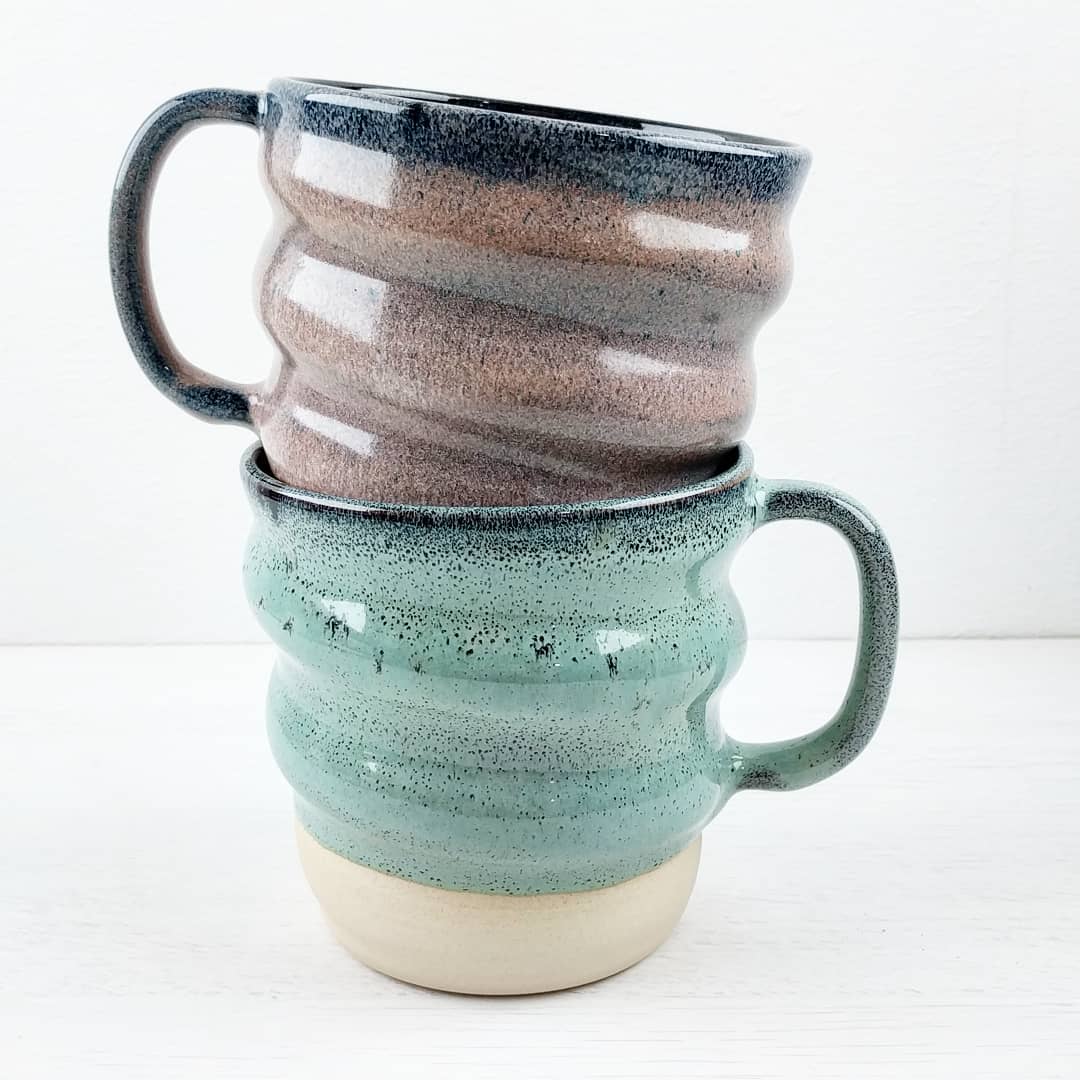Nautilus Slip Pattern
The Nautilus pattern is a very simple process, created by stamping a pattern in thick slip while the piece turns slowly. It is an interesting pattern on its own, but also provides a textured surface for glazes to flow over.
To do this, you need a thick mix of slip (ideally the same clay as you throw in, or a slip with a similar shrinkage to the clay) and something to stamp the pattern. I use a soft rubber rib, as it has a nice amount of flexibility. You need something soft enough to press down into the piece without digging in but rigid enough to move the slip, but this covers a very broad range of materials.
The main consideration for this technique is relative dryness of the piece and slip. You need to leave the piece long enough that it's firmed up enough to withstand the process, but not so long that it's too dry. The problem with excessive dryness is that the clay has already begun to shrink but the slip hasn't, and once the slip starts to shrink around the pre-shrunk clay it will crack and potentially fall off completely. This means it becomes quite obvious whether you got it right, so after a few attempts you'll start to get a feel for the correct starting conditions.
So with that in mind, here's the process:
Throw a piece, and leave it on the batt to dry to soft leather hardness. For me, this normally means throwing them in the morning and applying the slip in the afternoon, but for larger pieces I'll dry them slower in sealed plastic boxes and the slip might be applied a day or two later. This is less crucial on plates than something like a bowl, as the plate can't collapse, so small plates are the perfect pieces to practice/test this technique on.
Apply the slip. This can be done with a syringe/trailer across the whole surface, or can be scattered across the surface to create a more interesting colour pattern.
Then set the wheel to a slow speed, take whatever you're using to stamp the pattern, and start at either the centre or the rim (I prefer the pattern you get from the centre). The basic motion is to move the rib up and down quickly, while slowly spiralling out:
The rate at which you do both parts of the movement compared to the wheel speed is what determines the pattern generated. It can produce a great number of very fine lines, or fewer and broader lines. It's just a case of experimenting to see which you like best.
The pattern can also be applied to bowls:
Or the outside of taller pieces:
And the best ways of glazing them is to take a similar approach to the Peacock Eye and Pebble designs, with an opaque glaze around the rim and a fluid translucent glaze across the rest, or a coloured slip and a glaze that will respond to it:
That's all there is to it! Please try it and let me know how you get on, message me or use the hashtag oldforgecreations (I often miss @mentions on Instagram and there's no way to find them afterwards, but I'll see the tag). Good luck!
If you like this sort of content and want to support the creation of more, I now have a Patreon specifically for it or a page on my website if you just want to make a single donation.











